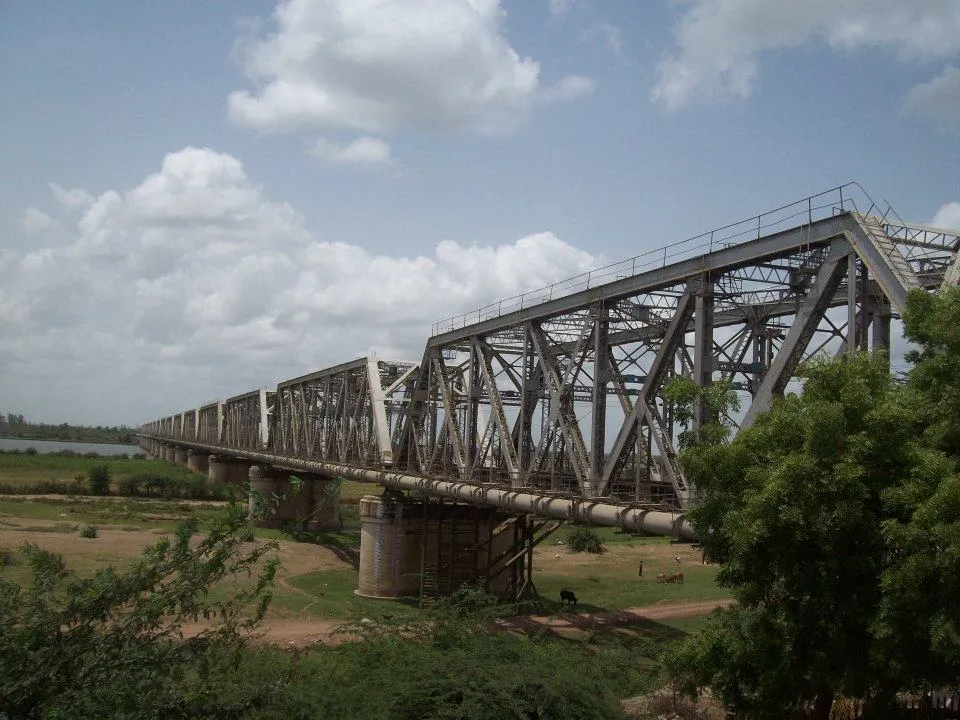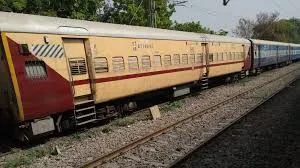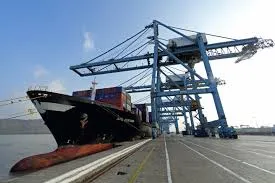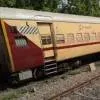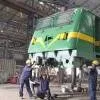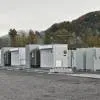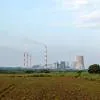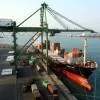Annaram Barrage of the Kaleshwaram Lift Irrigation Scheme (KLIS), among the world’s largest irrigation projects, was recently constructed byAfcons Infrastructure. This barrage, combined with the
Medigadda and
Sundilla barrages constitute the ambitious KLIS. Almost 2,000 million cu ft (tmc) of water per day will be moved upriver through gravity canals from
Medigadda barrage to Annaram barrage, from where it will be pumped further back to Sundilla barrage. From there, the water will be diverted to Yellampalli reservoir and then distributed to nearby districts.
“We entered the dam and barrage segment in 2017 with the Annaram barrage project, which is part of this mammoth water preservation project,” says K Subramanian, Executive Vice-Chairman, Afcons Infrastructure. “Despite entering a new segment, Afcons has achieved several national benchmarks in concrete pumping in the irrigation and hydropower sector. Kudos to the entire team for bringing in the laurels!”
“Being part of such an amazing and extraordinary engineering marvel is an honour. Annaram was the first of the three barrages to be completed substantially before time,” adds Sekhar Das, Project Manager, Annaram Barrage Project, Afcons Infrastructure. “The early delivery makes Afcons’s maiden venture into the irrigation segment extra special. With a capacity of 10.87 tmc, Annaram is the second-largest barrage in the entire KLIS.” Annaram Barrage was built at a cost of Rs 27.32 billion in a timeframe of 24 months.
Civil scope
Here’s a look at the civil structure specifications of this barrage:
- Dimensions: Length – 1,270 m; Width – 100 m
- No. of piers: 72. Dimensions (each): Length – 100 m; Thickness – 4 m; Height – 24 m
- Launching apron: Upstream – 71 m; Downstream – 116.4 m.
The scope of work included:
- Construction of the barrage for a length of 1,270 m with 66 vents of 15 m along with energy dissipation arrangement and abutments, wing and return/flank wall, etc
- All mechanical works related to the barrage radial gates of size 15 m ×13 m (12 in total) for under sluice bay and for other bays of size 15 m × 12 m (54 in total)
- Road bridge with clear carriageway of 7.50 m
- Earth bunds in right and left side to connect the road
- Construction of guide bunds of both the sides of barrage
- Laying of CC block size of 1,500 x 1,500 x 900 mm with loose stone protection in both streams and along with water side of guide bunds.
- Laying of stone pitching in upstream and downstream of barrage and launching apron with stones in water side of guide bunds
- Design flood discharge – 65,000 cusecs.
Quantifying right
Materials such as cement,reinforcement steel, aggregate, structural steel and rock boulders have been used in the construction of this barrage.
Highlights include:
- 1,200,000 cu m of concreting done for the entire project
- 55,000 mt of reinforcement steel used
-
80 lakh cu m of earthwork moved
- 1,500 tonne of cement consumed on average per day
- 200 mt of steel used on average per day
- About 6,000 cu m concrete poured on average per day
- More than 1 lakh cu m concreting per month achieved for four consecutive months.
Fully equipped
As this project had a short deadline, Afcons sourced additional equipment and resources from time to time to complete work efficiently. “The initial change of scope and halt of work for over 45 days during floods meant extra resources were the key to getting this barrage completed in just 24 months,” shares Das. He goes on to elaborate upon the equipment used in the construction of the barrage: 11 piling rigs; 120 dumper trucks; 60 excavators; 11 boring rigs; seven boom placers; four concrete pumps; 36 transit mixers; seven batching plants; two crusher plants with a capacity of 250 tph; vibro hammer for sheet piling; crawler cranes; pick-n-carry cranes; trailers; and dewatering pumps.
Further, Doka formwork was used in the construction of the piers, where 3-m height lift could be achieved in one go. Rolla deck sheets were used in place of precast panels for the road bridge, saving nearly two months’ time for casting of panels, erection and material handling. “Moreover, the project progress was monitored in Primavera and financial status tracked on SAP to keep the project on track in all aspects,” says Das. “All periodic reports were made as per formats prepared after discussion with all department heads. We also tracked daily progress through CCTV cameras, site visits and focused WhatsApp groups.”
Innovation in execution
One major innovation during project execution was the use of Secant piling, which was used in a cut-off foundation for the first time in the world in barrage construction.
Das further explains, “At the outset of the project, the location of the barrage was shifted, increasing its length by 151 m. The new geological survey pointed at extra work of more than 4,000 piles and 20 per cent increase over the estimated quantities of concreting and steel. At the same time, the new site area had differentiated strata. The presence of sand, soil, gravel and, at times, hard rock meant the engineers could not proceed with the method of sheet piling. All this had to be addressed without any change in the deadline. That’s when we decided to use secant piling in the cut-off foundation, to accommodate the variable strata and cover up the work without any delay. This involved precise deployment of piling rigs for completion of foundation works.”
Conquering challenges
Effective planning and strong teamwork were definitely factors that helped the team overcome various difficulties during execution. As Das shares, “The approach to the site location was poor initially; so mobilisation was a major challenge. But with the help of the authorities and correct permissions, mobilisation could begin smoothly. For timely land acquisition, we conducted numerous meetings with the villagers and explained the benefits of the barrage and KLIS. It helped a great deal to expedite land acquisition. Local support was critical in timely completion.”
Das shares other major challenges involved in constructing this barrage and how the team effectively overcame them:
- Approach roads: There were no appropriate roadways to transport materials to the site. Many roads and approach paths were created before the project began to cater to this remote location.
- Dewatering: As the barrage location was right on the riverbed, the entire area was filled with water. Dewatering arrangements were made using a multistage well-point dewatering system, which helped speed up the process.
- River diversion: To start construction activities, the whole length of the river was diverted using separate bunds. The bunds were constructed upstream for temporary diversion and connected to the total length of the barrage.
- Procurement: Procurement was a major challenge. Owing to the remoteness of the site location, even for small materials, one would have to travel at least 300 km. Hence, planning and procurement played a critical role in avoiding delays.
- Change of barrage location: At the outset of the project, there was a big change in plan. The location of the barrage was shifted, increasing its length by 151 m. A new geological survey was done at the new site once again. This resulted in extra work of more than 4,000 piles and 20 per cent increase over the estimated quantities of concreting and steel. And while there was increase in work quantity, the survey also threw up another major challenge. The ground at the new site had differentiated strata with layers of sand, soil, gravel and, at times, hard rock. Thus secant piling was used in the cut-off foundation.
Safety first
Afcons established and maintained strong health, safety and environment protocols for this project. Consistent mobilisation of resources (machinery, formwork, manpower) in time was ensured for timely completion. The result: a clean safety record of 8.2 million safe man-hours!
Project details
Location: Annaram, Telangana
Features/specifications: Construction of barrage for a length of 1,270 m with 66 vents of 15 m along with energy dissipation arrangement and abutments, wing and return/flank wall
Total cost: Rs 27.32 billion
Contractor: AFCONS-VIJETA-PES (JV). Afcons Infrastructure. Website: www.afcons.com; Vijeta. Website: www.vijeta.in; PES. Website: www.peseng.net
Architect/planner: Central Design Organisation (CDO), Government of Telangana. Website: www.telangana.gov.in
Cement/concrete: In-house production. Material was procured from many vendors.
Concrete pumps: Schwing Stetter. Website: www.schwingstetterindia.com; Putzmeister. Website: www.putzmeister.com
- SERAPHINA D’SOUZA
